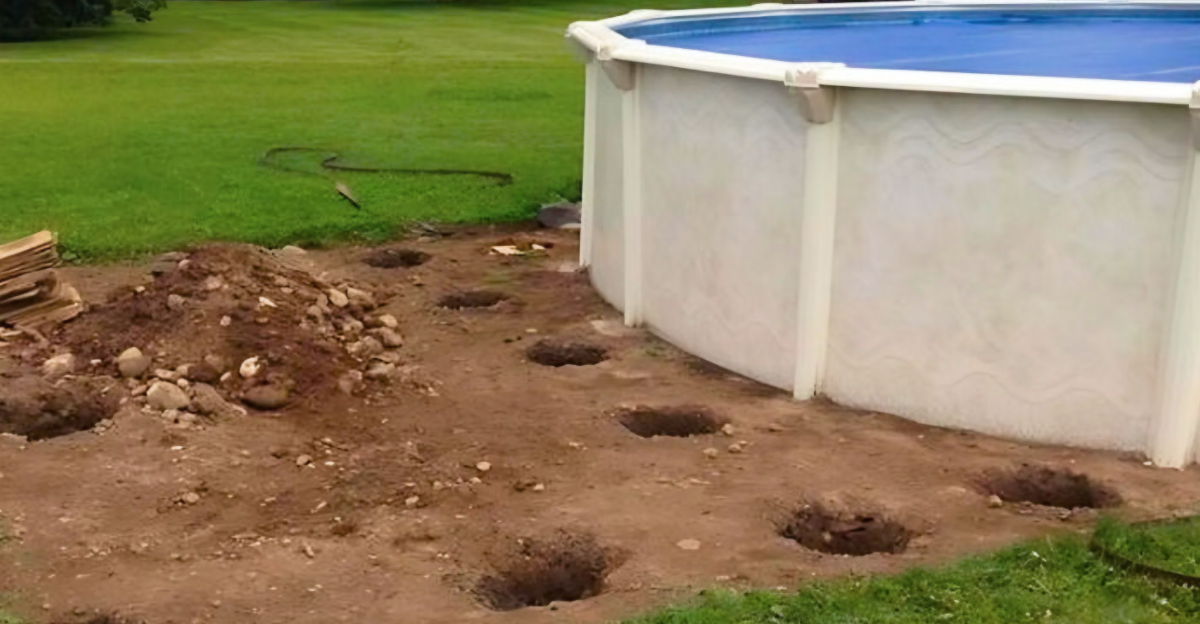
You step outside, coffee in hand, only to find mysterious holes peppering your lawn. No mounds, no obvious culprits, just open cavities disrupting your green expanse. It’s perplexing, especially when typical diggers like moles or gophers usually leave telltale dirt piles.
These unassuming holes can stem from various sources: wildlife, insects, or even environmental factors. Identifying the cause is crucial to address the issue effectively and prevent further lawn damage.
Let’s delve into eight common reasons behind these enigmatic holes and explore practical solutions to restore your yard’s pristine appearance.
1. Voles
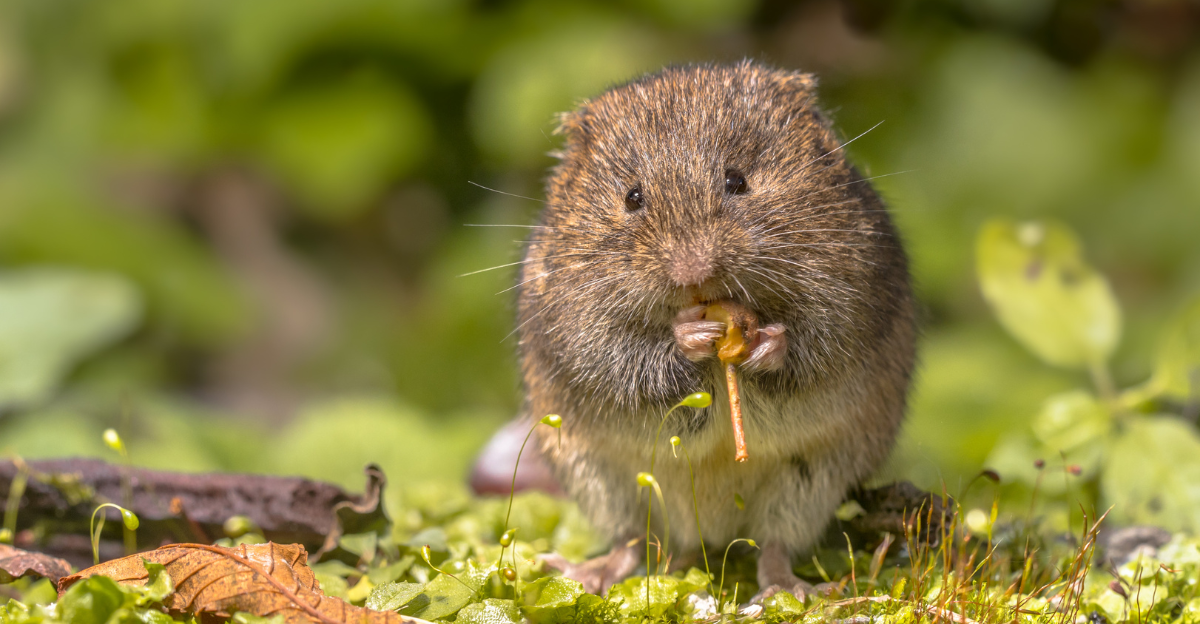
Voles, small rodent relatives of mice, are notorious for creating shallow, golf ball-sized holes without accompanying mounds. Their surface tunnels can wreak havoc on lawns, especially when snow melts, revealing a network of pathways.
Unlike moles, voles are herbivores, feeding on grass roots, bulbs, and bark. Their feeding habits can lead to dead patches and girdled shrubs if left unchecked.
To combat voles, consider installing physical barriers around vulnerable plants, reducing ground cover to eliminate hiding spots, and employing repellents or traps as needed.
2. Skunks and Raccoons
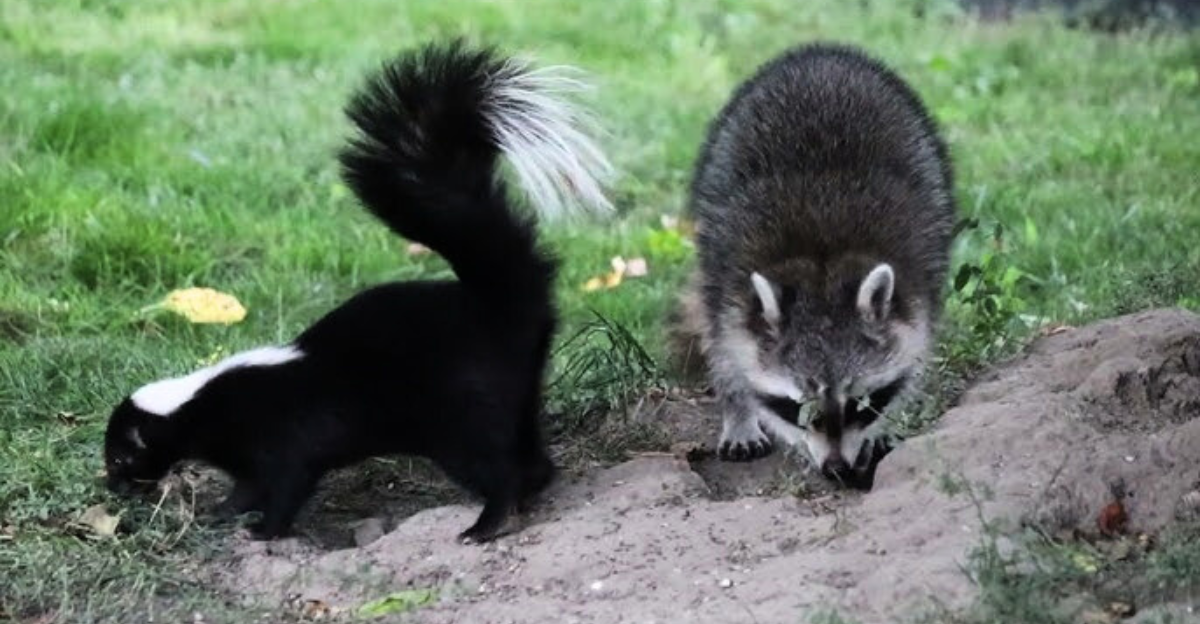
If your lawn resembles a battlefield of shallow holes come morning, nocturnal foragers like skunks or raccoons might be the culprits. These animals dig in search of grubs and insects, often leaving behind small, scattered holes.
Skunks typically create holes about 3–4 inches in diameter, while raccoons might roll back sod to access food sources beneath. Their activity is usually concentrated in areas with high insect populations.
Reducing grub infestations through appropriate lawn treatments can deter these foragers. Additionally, securing trash bins and removing pet food can make your yard less inviting to these nighttime visitors.
3. Squirrels and Chipmunks

Squirrels and chipmunks are active during the day, often digging small holes to bury or retrieve food. Squirrel holes are typically shallow and scattered, while chipmunk burrows are about 2 inches wide with no surrounding dirt mounds.
These rodents prefer areas near trees or shrubs, using their burrows for shelter and food storage. Their digging can disrupt plant roots and create tripping hazards.
To discourage their activity, remove food sources like birdseed, use repellents, and consider installing barriers around garden beds. Maintaining a tidy yard can also reduce their interest in your property.
4. Ground-Nesting Bees and Wasps
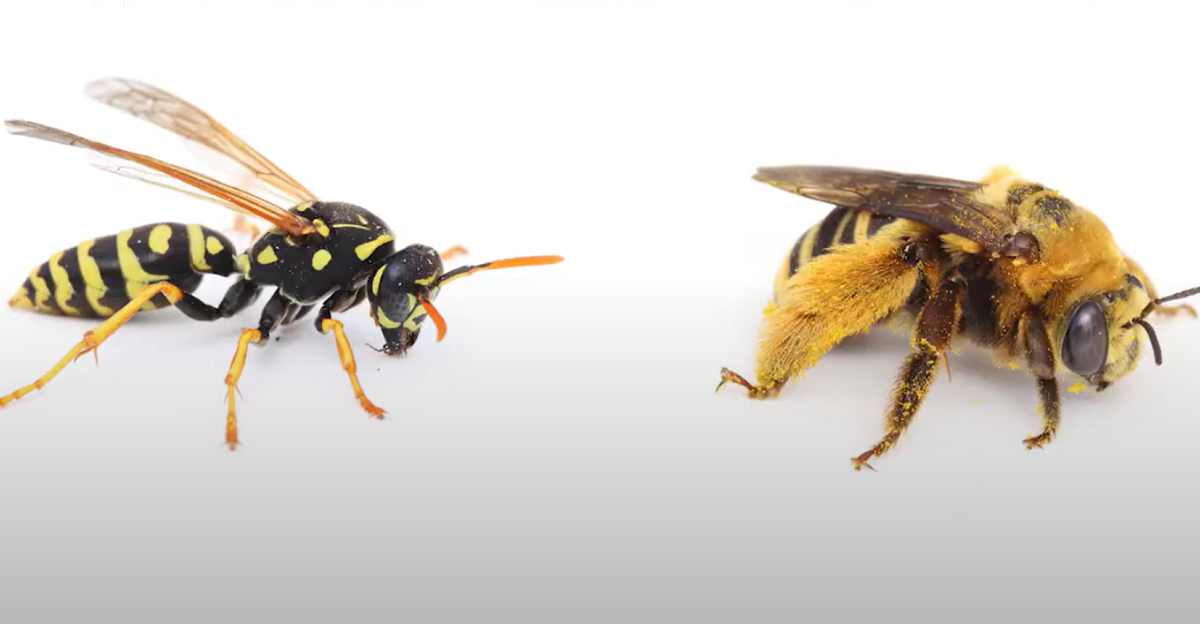
Certain bee and wasp species, like bumblebees and yellow jackets, nest underground, utilizing existing holes or creating new ones. These nests often have small entrance holes with minimal soil disturbance.
Ground-nesting bees are generally non-aggressive and beneficial pollinators. However, yellow jackets can be more aggressive, especially when their nests are disturbed.
If these insects pose a threat, it’s best to consult a professional for safe removal. For non-threatening species, consider leaving them undisturbed, as they play a vital role in pollination.
5. Rabbits
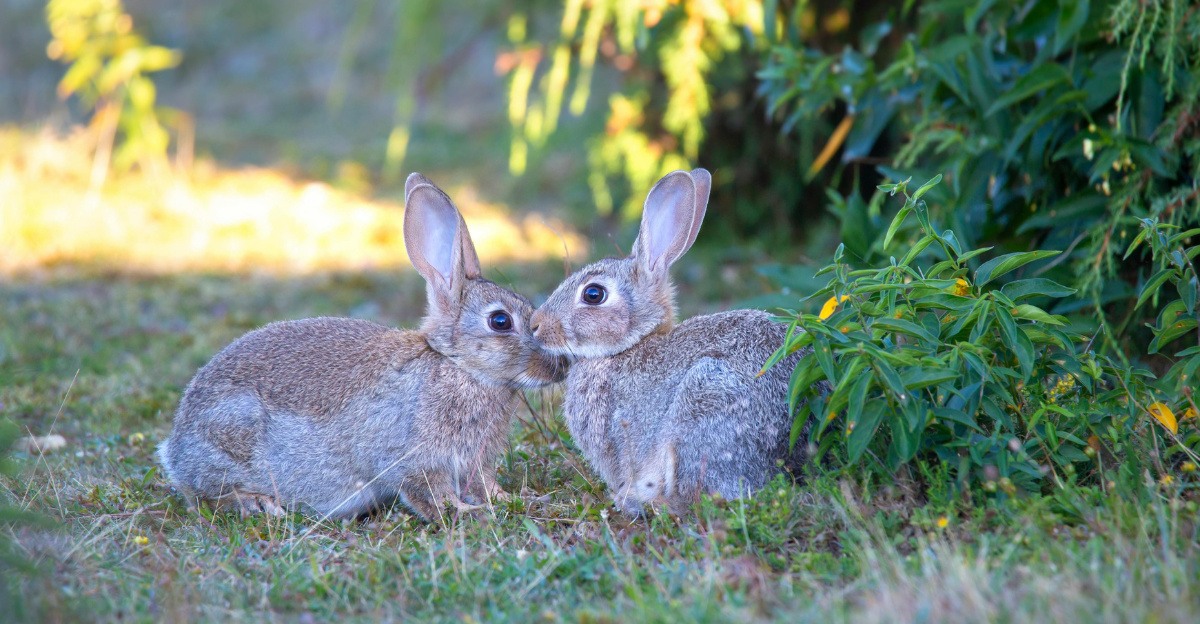
Female rabbits often dig shallow depressions in lawns to create nests for their young. These nests are typically lined with grass and fur, then covered with vegetation to camouflage them.
You might notice a patch of dead grass or a slight indentation, but the nest’s subtlety makes it easy to overlook. Disturbing these nests can harm the baby rabbits inside.
If you discover a rabbit nest, it’s best to leave it undisturbed. The young will usually leave the nest within a few weeks, after which you can repair any lawn damage.
6. Rats

Rats can create burrows in lawns, especially near buildings or dense vegetation. Their holes are typically 2–3 inches in diameter, with smooth walls leading to extensive tunnel systems.
These rodents seek shelter and food, often nesting close to human activity. Signs of rat infestation include droppings, gnaw marks, and greasy trails along walls or fences.
To address a rat problem, eliminate food sources, seal entry points to buildings, and consider using traps or consulting pest control professionals for safe and effective removal.
7. Grubs
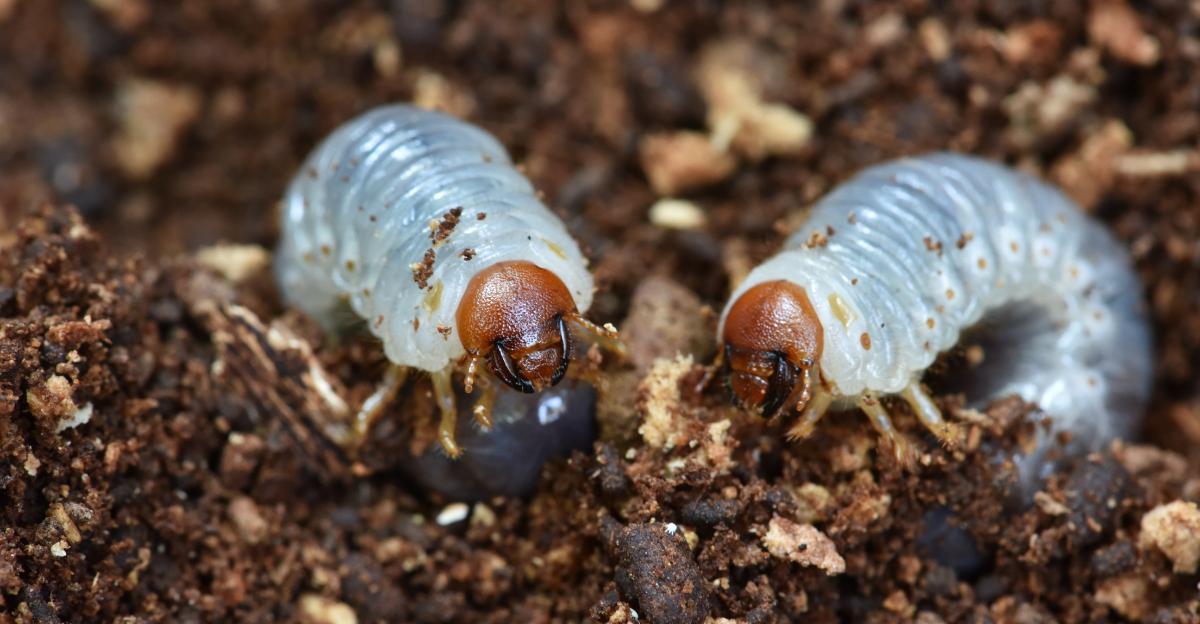
Grubs, the larvae of various beetles, live beneath the soil, feeding on grass roots and causing brown patches. While they don’t create holes themselves, their presence attracts animals like skunks and raccoons that dig to reach them.
Signs of grub infestation include spongy turf and increased animal digging activity. To confirm, peel back a section of sod and look for white, C-shaped larvae.
Treating your lawn with appropriate grub control products can reduce their population, subsequently decreasing the digging activity from animals seeking them out.
8. Environmental Factors
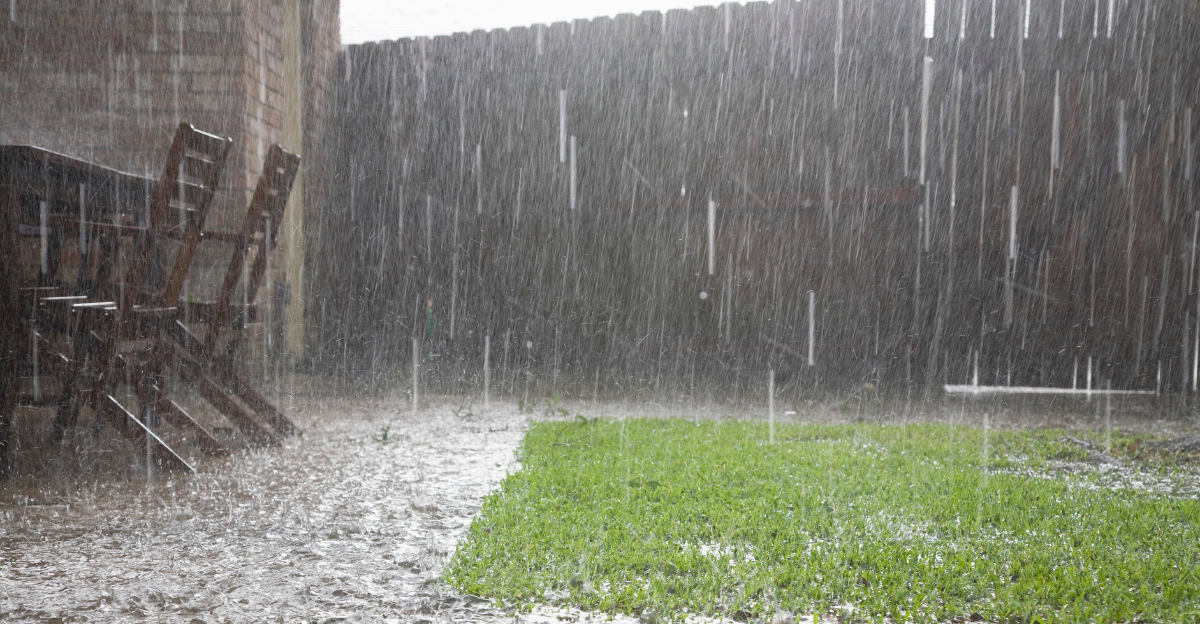
Not all lawn holes are caused by animals. Environmental factors like soil erosion, heavy rainfall, or decaying tree roots can lead to depressions or holes in your yard.
Poor drainage can wash away soil, while decomposing roots leave voids that eventually collapse. These issues often result in irregularly shaped holes without mounds.
Addressing these problems involves improving drainage, filling holes with topsoil, and reseeding affected areas. Regular lawn maintenance and monitoring can help prevent such issues from recurring.
Restoring Your Lawn’s Integrity

Identifying the cause of holes in your lawn is the first step toward remediation. Whether dealing with wildlife, insects, or environmental factors, tailored solutions can restore your yard’s health and appearance.
Regular lawn inspections, proper maintenance, and prompt action when issues arise are key to preventing future problems. When in doubt, consulting professionals can provide guidance and peace of mind.
With attentive care and informed strategies, your lawn can return to its lush, hole-free state, ready for barefoot walks and backyard gatherings.
Explore more of our trending stories and hit Follow to keep them coming to your feed!

Don’t miss out on more stories like this! Hit the Follow button at the top of this article to stay updated with the latest news. Share your thoughts in the comments—we’d love to hear from you!







